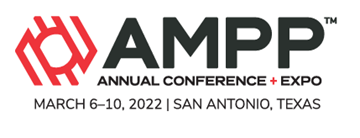Search
Products tagged with 'chemical inhibitors'
View as
Sort by
Display
per page
51317-9586- Polymer and Nanomaterial Based Inhibitors: Stimuli-Responsive
Product Number:
51317-9586-SG
ISBN:
9586 2017 CP
Publication Date:
2017
$20.00
Evaluation of Seawater Treatments to Mitigate the Corrosion Rate of Carbon Steels and CRAs Rigid Pipeline During Pre-Commissioning Operations and Long-Term Wet Storage
Product Number:
51324-21050-SG
Publication Date:
2024
$40.00
Intellisyn™ - A New Class Of Multifunctional Smart Particles For Advanced Corrosion Protection
Product Number:
51322-17959-SG
Publication Date:
2022
$20.00
Long Distance, Long Duration Case Study of Successful Inhibitor Application on a Very Light Hydrocarbon Pipeline
Product Number:
51324-21214-SG
Publication Date:
2024
$40.00




